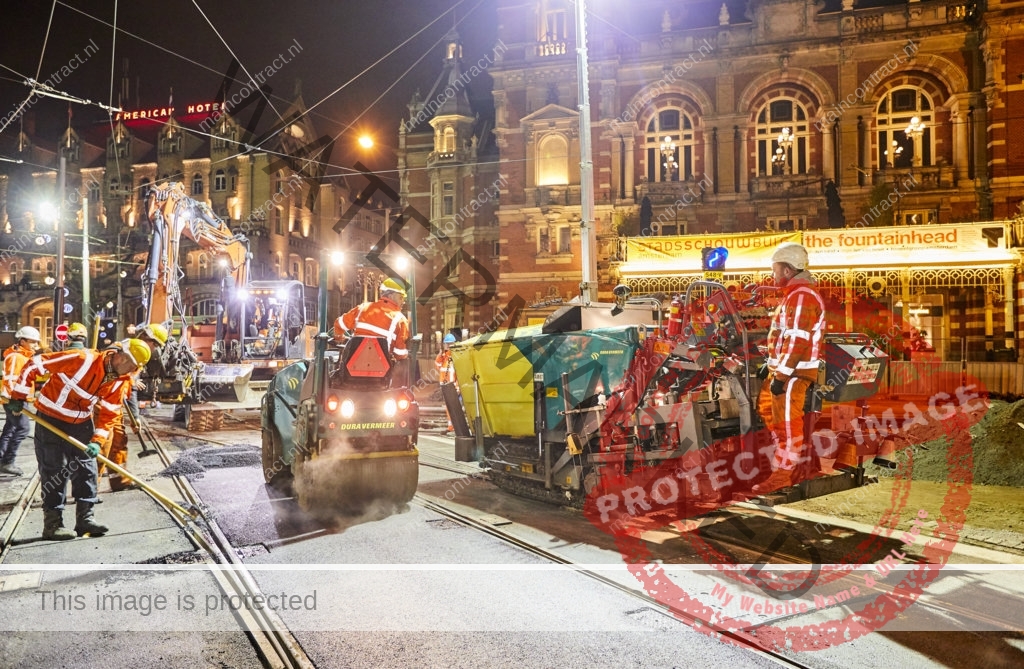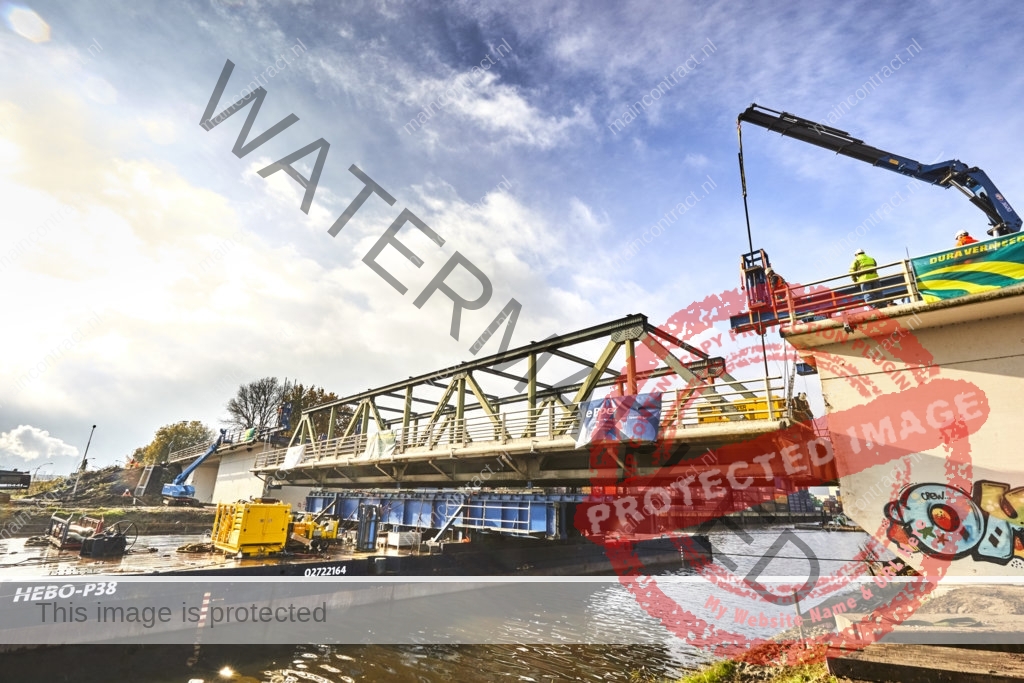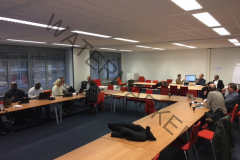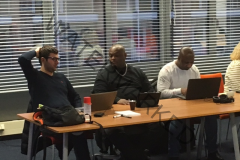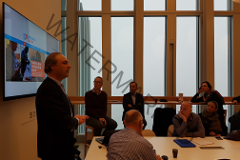Pagina Inhoud [Weergeven]
![]()
The Dutch government is retreating to the background, and is disposing of tasks that traditionally belonged to the public domain. Within the Infrastructural branch this is expressed by the introduction of long-term performance-based management and maintenance contracts, so called maincontracts. For example, in the recent history the government demands for several light poles or another product. Within the new maincontracts the government demands for a service, in the case of light poles the government demands for a light intensity of 20 Lux for a certain part of the road. The manner how the Maincontractor is achieving this performance is the responsibility of the Maincontractor and not of the government.
With these new contracts, client and Maincontractor will change its way of work. To deal with this change both parties are implementing the international standard NEN-ISO 55001. The Institute of Asset Management has described a conceptual model of an assetmanagementsystem which covers all aspects of this NEN-ISO 55001. The cooperation between the client and Maincontractor as asset owner, asset manager and service provider within this
Currently Dura Vermeer Division Infra has multiple long-term performance-based management and maintenance contracts in the portfolio. For example, an area contact in the county Noord-Holland, Lelystad Airport and the Coentunnel in Amsterdam. Its Dura Vermeer Division Infra’s ambition to further develop itself as a Maincontractor. This will be accomplished by acquiring new long-term performance-based management and maintenance contracts. To acquire these new contracts Dura Vermeer Division Infra needs to know where it must improve itself. This research is mapping the capabilities which Dura Vermeer Division Infra need to improve.
The research is conducted in cooperation with the counties Noord-Holland and Zuid-Holland. The results are reflected in these counties and Dura Vermeer Division Infra. But given the characteristics of this research the outcomes can be seen as a generic guideline for a client and Maincontractor during the effectuation of long-term performance-based management and maintenance contracts.
Measure of capacity and the ability of an entity (system, person or organization to achieve its objectives
Note 1 to entry: Asset management capabilities include processes, resources, competences and technologies to enable the effective and efficient development and delivery of asset management plans and asset life activities, and their continual improvement.
Source : NEN-ISO 55000. The author thanks the NEN for his permission to publish the terms and defenitions from the used standards
![]()
Author: Stijn van’t Hek MSc University of Applied Sciences HU
1st Thesis Supervisor: Ing. Jan Stoker MSc. MEng. University of Applied Sciences HU
Source: Dure Vermeer. Infrastructure activities capital of Netherlands
1. Model, Maincontracting and cooperation CL/MC
To gain insight in the cooperation between client and Maincontractor within the concept Maincontracting the following model was designed. This model contains three concepts, first as Asset Management framework the international standard the NEN-ISO 55001 (2014). Secondly, the processes within this framework based on The Institute of Asset Management Conceptual Model (Institute of Asset Management, 2015). Thirdly the cooperation between client (CL) and Maincontractor (MC) within the processes. Which is described on the basis of the concept Maincontracting, whereby the responsibility will be shown by the RASCI-model.
The international standard NEN-ISO 55000 gives an overview of the concept Asset Management by explaining the asset management principles and terminology. The NEN-ISO 55001 outline the requirements of an Asset Management System. The design and execution of an Asset Management System are discussed in the NEN-ISO 55002 (NEN-ISO 55000, p.10). For this research the guidelines how an organization can establish its Asset Management system the IAM’s conceptual model is used (Institute of Asset Management, 2015). This conceptual model is describing 39 processes within 6 groups. In each process the client and the Maincontractor cover the roles of Asset Owner (AO), Asset Manager (AM) and Service Provider (SP).
Source: The IAM’s Conceptual Asset Management Model. Herdrukt uit Asset Management – an Anatomy (p.16), The Institute of Asset Management, 2015, Verenigd Koninkrijk, Bristol.
Source : Alignment of the 39 Asset Management Landscape Subjects with six Subject Groups. Herdrukt uit Asset Management – an Anatomy (p.17), The Institute of Asset Management, 2015, Verenigd Koninkrijk, Bristol.
Group 1 Strategy & Planning
The goal of this first group, strategy & planning, within the conceptual model to align the asset management activities to the overall organizational goals, the so-called ‘line of sight’ (IAM, 2015, p18). This group contains 5 processes, see table 1 for the division of tasks between the AO, AM and SP.
Group 2 Asset Management and Decision Making
Effective Asset Management decision making is essential for an organization to maximize the value realized over the asset life. This group determines the choices during an asset life: Acquisition & creation, operation & maintenance and end of life (IAM 2015, p19). Within this group 5 processes are named, see table 2 for the division of tasks between the AO, AM and SP.
Group 3 Life Cycle Delivery
The subjects within this group relate to the implementation of the Asset Management plan(s) developed in group 1 Strategy and planning. Control and risk-driven execution of the asset management activities is essential to achieve the Asset Management objectives (IAM 2015, p20). Within this group 11 processes are named, the distribution of responsibilities is mapped in table 3.
Group 4 Asset informatiemanagement
Implementing an asset management system is an organizational change that leads to new organizational structures, role, responsibilities and contractual relationship. For implementing this change effective leadership is the key (IAM, 2015, p22.). Within this group 5 processes are named, see table 5 for the division of tasks between the AO, AM and SP.
Group 5 Organization & People
Implementing an asset management system is an organizational change that leads to new organizational structures, role, responsibilities and contractual relationship. For implementing this change effective leadership is the key (IAM, 2015, p22.). Within this group 5 processes are named, see table 5 for the division of tasks between the AO, AM and SP.
Group 6 Risk & Revieuw
This group contains the activities to identify, understand and manage the risks. The goal of this group of processes is to establish mechanisms for effective feedback and review within an organization. This support continual improvement of the asset management activities (IAM, 2015, p23). Within this group 9 processes are named, see table 6 for the division of tasks between the AO, AM and SP.
2. Results
As described the Asset Management framework consist of 39 processes divided over 6 groups. The cooperation, within these processes, between the client and Maincontractor is analyzed by three case studies. Per process the results of the cases is compared with the theory of the concept Maincontracting. The results are described per group.
Source: Dure Vermeer. Infrastructure activities
Group 1 Strategy & Planning
All tasks within this group of processes will be fulfilled by the AO and AM. This implies that the AO and AM must cooperate to establish the asset management strategy and planning. Next to this the SP must execute the asset management activities to achieve the asset management objectives. Because of this the SP must be informed. In the case studies both the client and the Maincontractor didn’t mention the SP as a stakeholder. Hereby the line of sight is not extended to the SP.
Group 2 Asset Management Decision Making
According to the literature, it was expected that the AO was accountable for the processes within this group. Within the cases the AO is delegated this responsibility to the AM. The SP has, in contrast to the first group, an informed or consulted role.
The clients responded that in the recent history the SP had no role in this group but, with the introduction of the long-term performance-based management and maintenance contracts the role of the SP shifts. Next to this they mentioned that the SP will never be accountable for one of the processes.
Group 3 Life Cycle Delivery
Within this group the AO has no role anymore and the SP is gaining more and more responsibilities. The client argues that the AM is accountable for the processes within this group. The SP is responsible for the execution of the asset management activities. Regarding the literature was concluded the SP had a consulting role, this is not the case.
Next to this the clients argues that the process configuration management is underexposed and is the responsibility of the client. In the near future they expected that the role of the Maincontractor will increase within this process.
The literature told us that the client is accountable and responsible for Reliability Engineering. Within the cases both the client and Maincontractor argues that the Maincontractor is responsible and even accountable for the Reliability Engineering.
For the execution of the asset management activities (preventive maintenance, fault & incident response) is the SP responsible and the AM accountable. The Maincontractor is convinced that preventive maintenance can be executed without the client in the role of AM. For the fault and incident execution the client is needed in the role of AM.
Group 4 Asset Information
Within the client’s organization asset information is an hot topic. New information systems are being developed. Next to this all the parties are following these developments cloyingly. Market innovations as Coins and CROW standards are qualified as interesting.
As stated in the theoretical part, the line of sight between AO, AM and SP within this group is clear. In the cases a more extensive role of the AO was expected.
Group 5 Organization & People
As stated in the theoretical framework, it was difficult to describe the AO, AM and SP roles. It can be concluded that both the client and Maincontractor, from their own perspective, are responsible and accountable for the procurement and supply chain process.
In terms of the organizational structure both organizations have organized themselves with an independent construction- and maintenance and operations department. Whereby only the maintenance and operations department is NEN-ISO 55001 certified. Both counties have the intention to also certify their construction department.
Next to this asset management leadership and organizational culture is underexposed in all the cases. All involved parties agreed that the competencies are shifting from client to Maincontractor. But the impact of this shift on the organizational culture and the manner how the organization will handle this change is not predictable.
Group 6 Risk & Review
This group of processes is supportive to the execution of asset management. The county Noord-Holland is expecting a Maincontractor which is proactive in the field of risk assessment & management and stakeholder management. Whereby the client and Maincontractor shared its responsibilities. Next to this the county Zuid-Holland has a similar view in the field of stakeholder management. In the field of risk assessment & management the client is responsible and accountable.
Regarding the process contingency planning the Maincontractor is always consulting and the client is always responsible and accountable.
All parties expected that sustainable development is an independent process for each stakeholder within the asset management playing field. The AM will set the framework and the SP can execute their activities within this framework.
![]()



